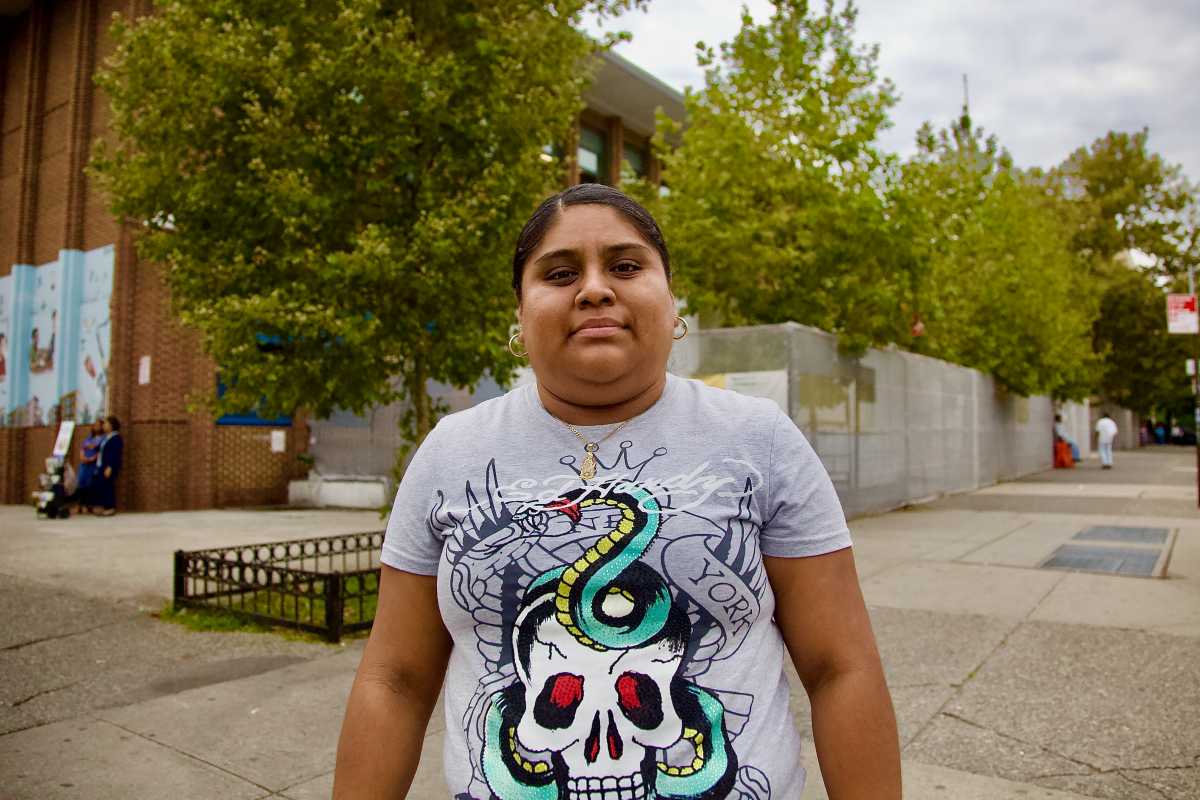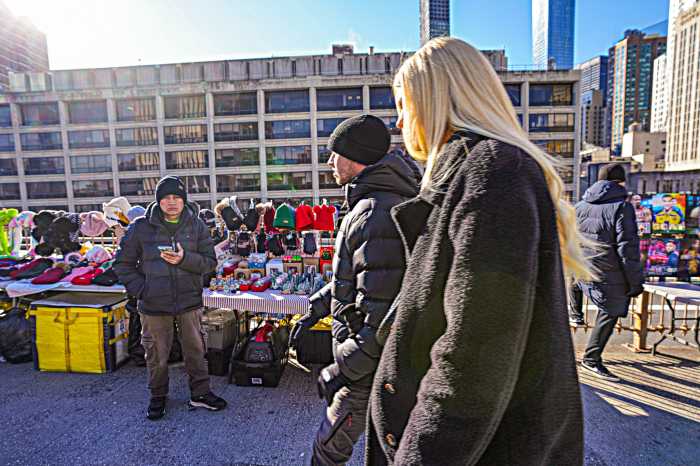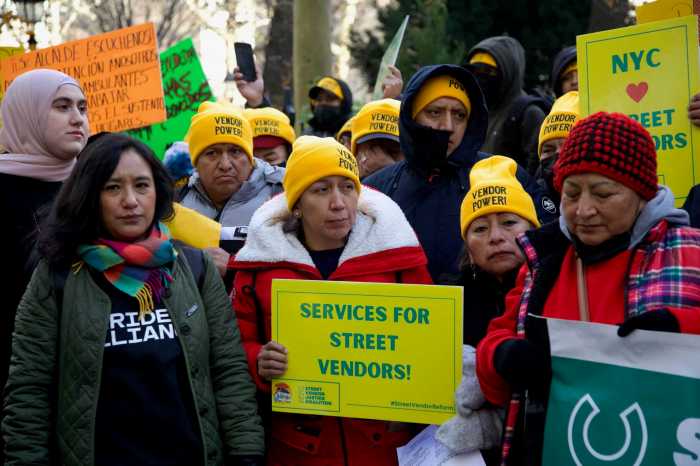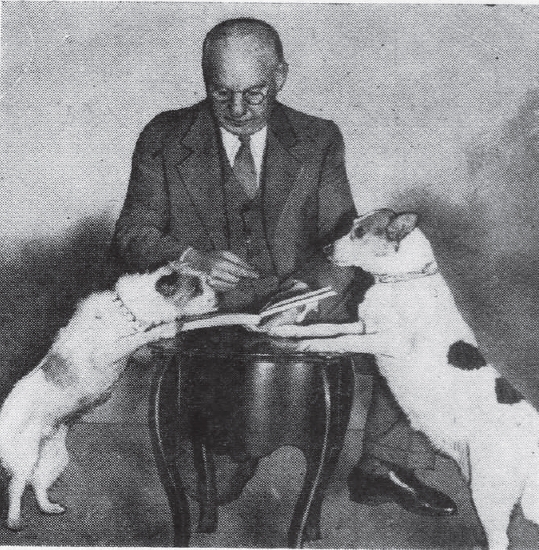At the age of 26, street vendor Guadalupe Sosa has worked with her mother to sell diced fruit, fresh juice and snow cones in the summer near their East Harlem apartment for close to half of her life.
She is a native New Yorker, which makes her somewhat of an outlier among street vendors who make up such a characteristic part of New York City life. Her mother, who emigrated here from Mexico in the late 90s and has been vending ever since has a story that’s much more common among the vendor community.
“We grew up to love being outside and vending, you know? And that’s how I became one,” she said.
Until recently, it was hard to precisely say how Sosa fit into the greater fabric of New York’s vendors. That’s why the Street Vendor Project conducted what it believes to be the largest survey of the city’s vendors to date, and published its findings in a new report that attempts to empirically answer “who vendors are and how they work and live.”
The complicated system of city and state laws and regulations that makes it challenging to become a fully permitted and licensed vendor also makes it difficult to know the exact number of street vendors operating throughout the city. To this end, the survey took on the onerous task of estimating the many unlicensed or unpermitted street vendors operating in the five boroughs.
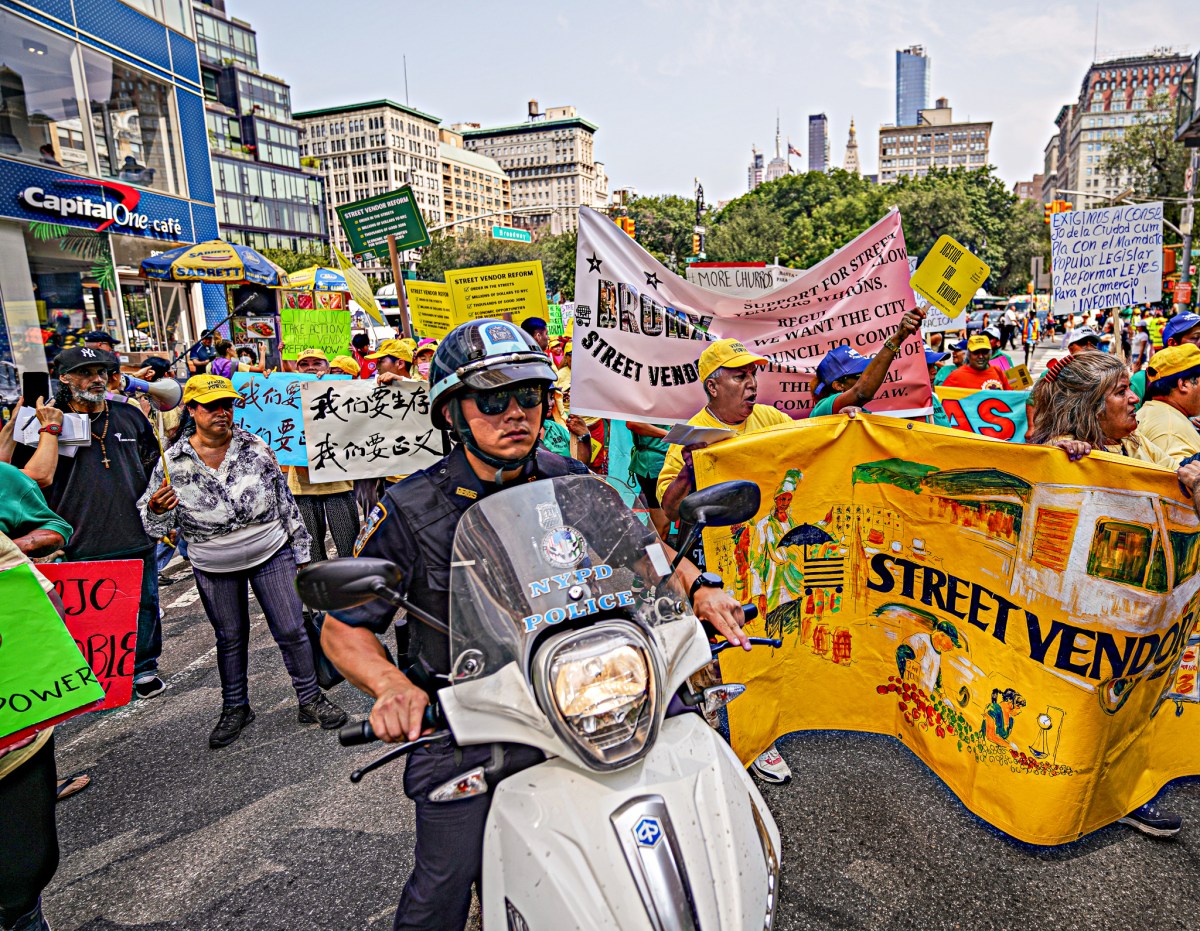
Overall, it found that there are about 23,000 total street vendors — of whom, an overwhelming 20,500-person majority work as mobile food vendors. An additional 2,400 work as general merchandise vendors. The data shows about three-quarters of mobile food vendors are unpermitted.
To arrive at the estimates, researchers at George Mason University took a sample of more than 2,000 street vendors and approximated the results for the entire city.
The results relate to vendors’ longstanding political campaign to increase the number of food vendor permits and licenses. A 2021 Council bill created a system where the Health Department offers at least 445 supervisory license applications per year. The Health Department said it has issued all of the license applications for the current period, but there are still 7,643 vendors waiting to apply for the program in the future.
The city caps general vendor licenses for non-veterans at 853, and the latest city data indicates that 11,926 vendors are waiting to apply.
Limits of license lack
The survey documented how a license or permit means more income for vendors. Sosa knows the pitfalls of being unlicensed all too well.
Though her mother took over another neighborhood vendor’s license when he retired, Sosa herself is still operating outside of the system. Being without a permit severely limits where and when you can operate, she said.
“With someone that doesn’t have a license, it’s different because if you see a lot of police activity, you kind of question, ‘Do I want a vend? Do I wanna risk getting a ticket?’” she said.
Sosa said one can most often spot unlicensed vendors because they’re often set up so that “in a second, she could just push her car and zoom out of a location.”
Beyond the realm of city regulations, the survey gathered eye-opening information about vendor demographics and their reflections on their own jobs.
Nearly 96% of street vendors who are not military veterans are foreign-born. Of those surveyed, they came from 60 different countries, the most common being Mexico (30%), Ecuador (24%), Egypt (20%), and Senegal (7%).
For the vast majority, their work is a longtime profession and primary source of income. Seventy-five percent have worked as vendors for four or more years.
Many respondents shared that they became street vendors not just out of economic necessity but because they love it. It’s common to enjoy being their own boss and the flexibility in hours.
Sosa told amNewYork Metro that though it can be stressful and difficult, she finds meaning in her role in the neighborhood and her customers. She chats with her neighbors and helps elders in their daily errands.
“Because we as street vendors are there every day, you make a relationship with the community and you care for them. So when stuff like that happens, you know what to do,” she said.
Her dream for her business is to make it easier for vendors to get education about policy and avoid tickets and the confiscation of their carts and products. That, and of course, an accessible place to use the bathroom.
“For the community, for everybody. Public bathrooms would be a great thing,” she said.
Read more about the results of the Street Vendor Project survey at immresearch.org/publications/street-vendors-of-new-york.
Read More: https://www.amny.com/business/



